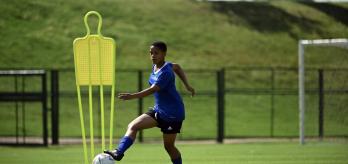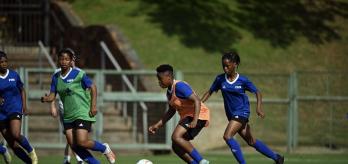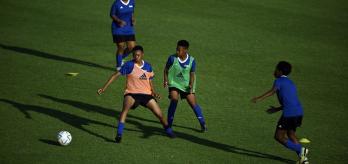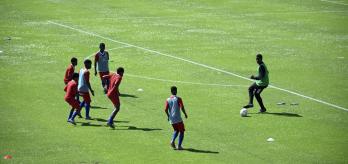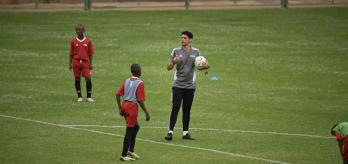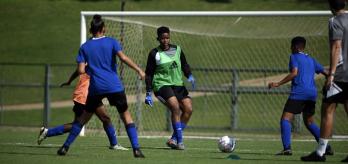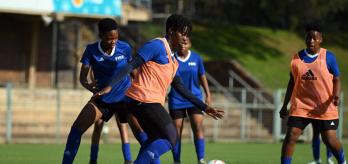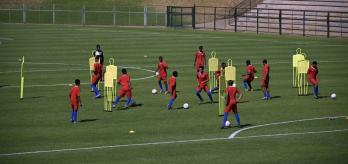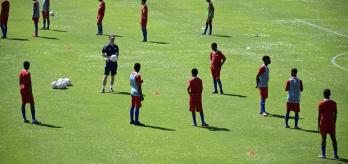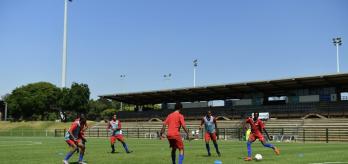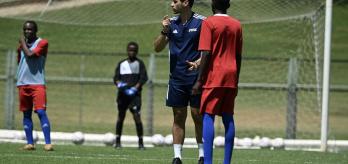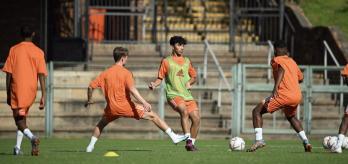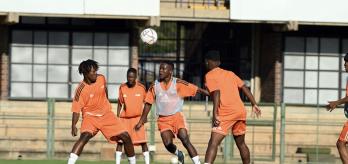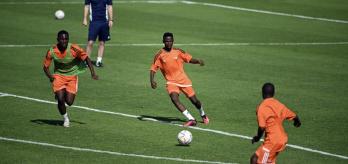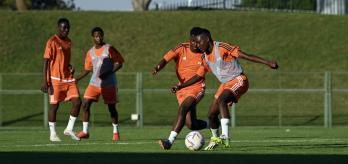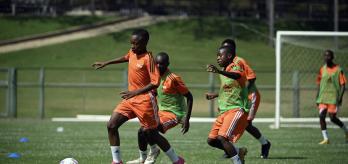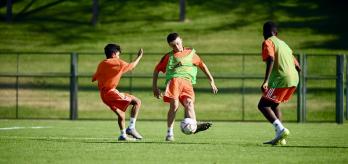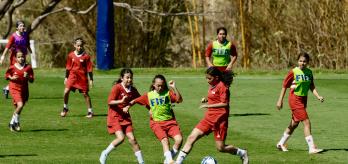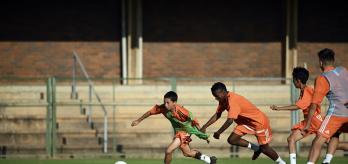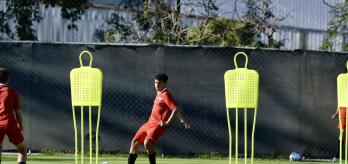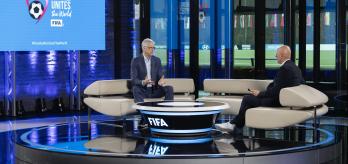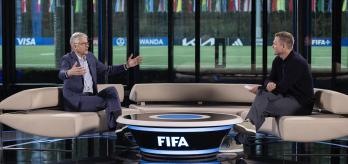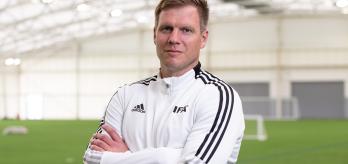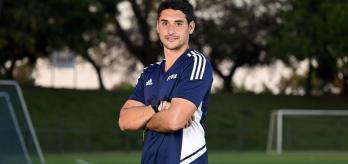Methodology
The intention: What is practised?
This opposed passing circuit works on a player’s ability to receive the ball into space before quickly advancing away from the pressure being applied from behind. The circuit focuses on player-level aspects such as close control and taking firm touches to escape pressure in a direction that ensures that play is progressed. A player’s body shape and orientation are critical to performing the drill effectively, and players must adopt a side-on position when receiving the ball before arranging their feet to enable them to drive into space with the ball. Players should perform the circuit at high intensity and are asked to pull away quickly from the mannequin and limit the number of touches it takes them to advance into space.
The scale: For whom is this relevant?
This circuit revolves around the player level and focuses on receiving the ball under pressure and moving into space. The drill does not simulate a particular phase of play. It presents players with an opportunity to practise their ball reception skills when an opposing player applies pressure, limiting the time and space that they have to progress play. Players who operate inside the opposition’s shape and are tasked with progressing the ball from between opposing players into the next defensive line are most likely to benefit from this circuit, which is non-position-specific.
The practice type: How is this practice designed?
This exercise involves a passing circuit performed in a relatively small exercise area, with the focus placed on aspects such as body shape and ball control. The mannequins provide a reference point for the position into which receiving players should pull away in order to receive the ball securely. The delayed run made by the pressing player increases the level of concentration, intensity and precision required to overcome these situations, which mirrors a real-game scenario. The cone gate gives the receiving player a target to drive the ball into and simulates ball progression into the space between two defenders higher up the pitch.
Session plan
Organisation
-
Set up 2 mannequins, 2 cone gates, 2 passing stations and 2 pressing player stations as shown in the image above.
-
Split the group into 2 teams of 6 (oranges and blues).
-
Position 3 orange players at 1 passing station and 3 blue players at the other and give each player a ball.
-
Place 2 orange players at the pressing player station closest to the passing station occupied by the 3 blue players.
-
Position 2 blue players at the pressing player station closest to the passing station occupied by the 3 orange players.
-
Place a player from each team at the mannequin positioned closest to their passing station.
Explanation
-
The circuit starts with the player at the passing station playing a pass outside of and beyond the mannequin occupied by their team-mate.
-
The player at the mannequin pulls away from it to receive the ball in space, takes a touch forward and drives towards the cone gate.
-
As soon as the initial pass is played, the opposing pressing player sprints from their station towards the receiving player to put them under pressure.
-
Players rotate between stations in an anticlockwise direction.
-
The circuit is performed simultaneously in clockwise and anticlockwise directions.
Key coaching points
Role of the coaches
-
First coach: leads the session and takes up a position in the centre of the circuit to enable them to coach the players on their body shape and technique.
-
Second coach: monitors the time from their position on one side of the circuit.
-
Third coach: observes the players’ body shape and technique from their position on the opposite side of the circuit to the second coach.





















